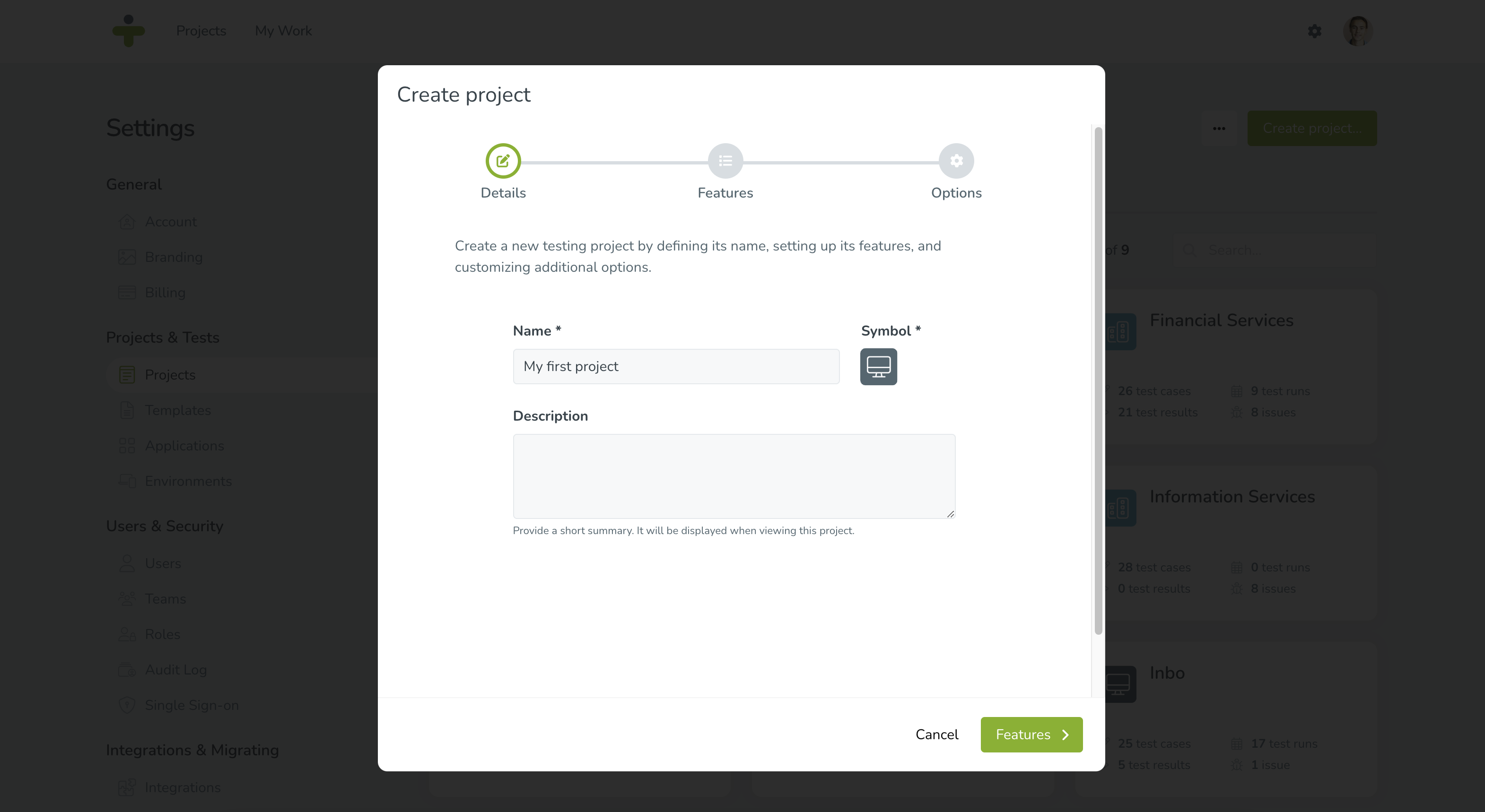Testing Project Insights From The Issue Summary
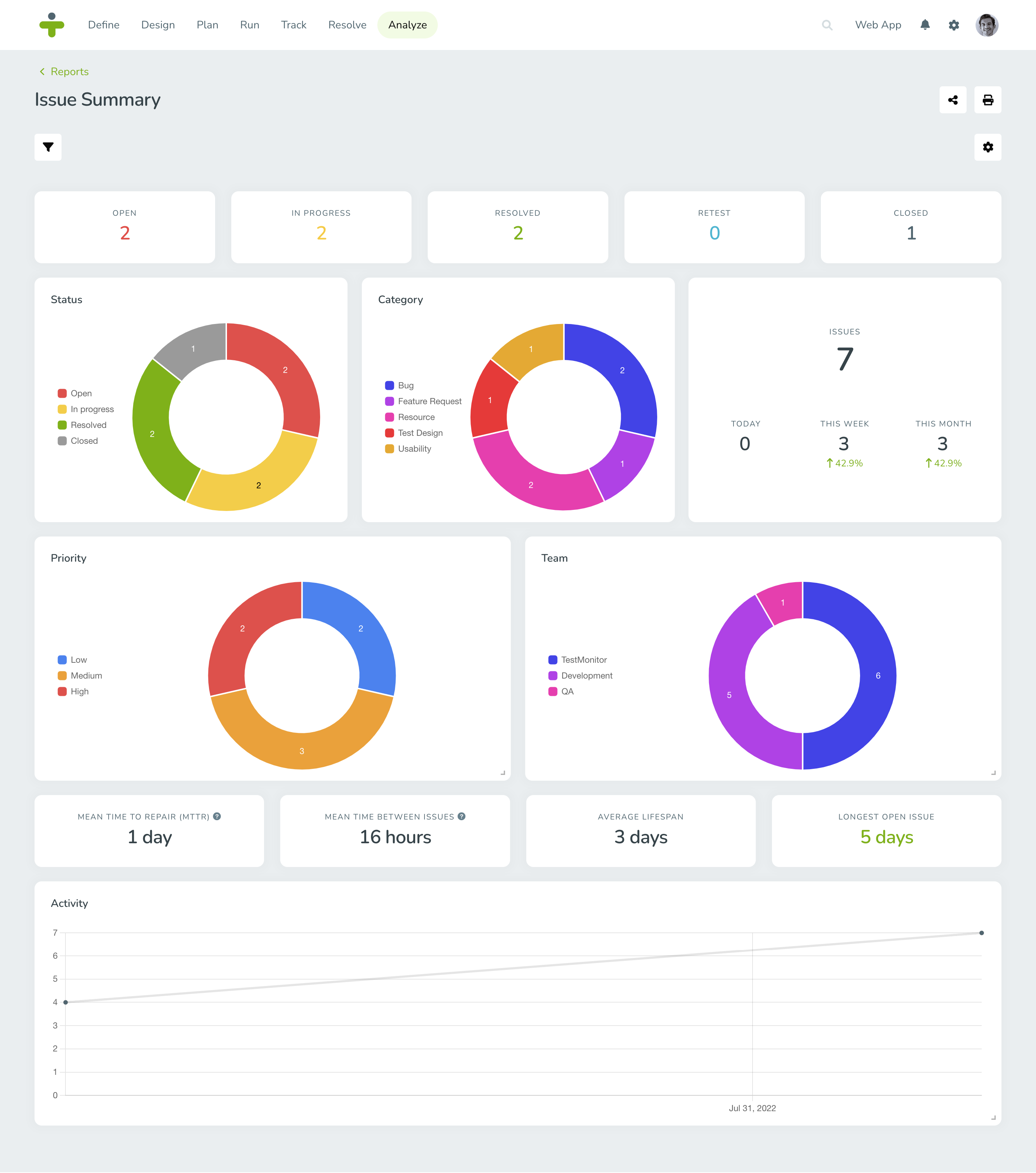
No matter the size or scope of your project, keeping stakeholders informed is crucial for success. This communication ensures that everyone involved is aware of progress, challenges, and resolutions.
One way that TestMonitor makes keeping stakeholder engaged easy is through the Issue Summary report. While it’s contents can vary based on the configuration and customization of TestMonitor, it generally includes the following information:
- Status/Status Charts:
- Provides an overview of issue statuses (Open, In Progress, Resolved, Retest, Closed, or any custom status.)
- Helps stakeholders gauge project progress and identify areas needing attention.
- Category:
- Classifies issues into categories (e.g., bugs, feature requests, usability or custom categories).
- Aids in understanding the nature of reported issues and prioritizing accordingly.
- Total Number of Issues:
- Breaks down the total number of issues reported today, this week, and this month.
- Assists in workload management and resource allocation by tracking fluctuations in issue activity.
- Priority:
- Assigns priority levels (high, medium, low) to issues for urgency assessment.
TestMonitor Tip: When every Issue is labeled high priority, the real critical ones are not going to stand out. Make sure the top-priority issues get the spotlight they deserve by having a clear process in place to prioritize them so your team can tackle them first.
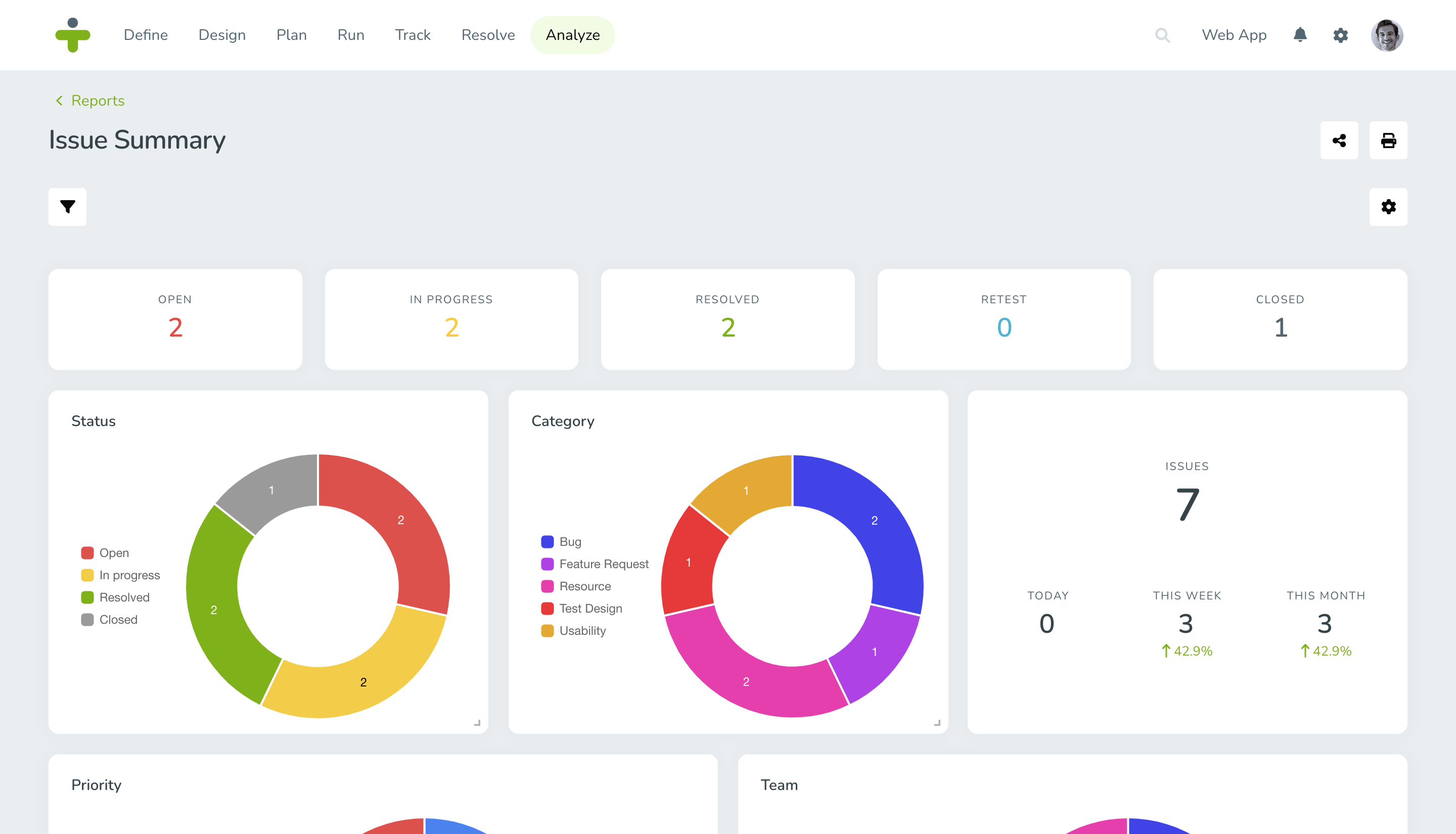
- Team:
- Reviews workload distribution among different project teams.
- Identifies imbalances in issue allocation and resource management.
- Assignee:
- Evaluates individual workload and performance.
- Ensures tasks are managed efficiently and assigns the right people to specific issues.
- Resolution:
- Tracks issue resolution outcomes: Fixed, Won’t Fix, Duplicate.
- Provides insights into the status of resolved issues.
- Impact:
- Prioritizes high-impact issues to help mitigate potential project risks.
- Ensures critical issues receive appropriate attention and resolution priority.
- Mean Time to Repair (MTTR):
- Measures the average time taken to resolve issues completely.
- Assesses the efficiency of the resolution process.
- Mean Time Between Issues (MTBI):
- Calculates the average time between the creation of new issues.
- Helps identify issue occurrence trends and project stability.
- Average Lifespan of Issues:
- Evaluates the efficiency of issue resolution by calculating average lifespan.
- Highlights areas for improving issue management and resolution times.
- Longest Open Issue:
- Reviews the highest-priority issue that remains unresolved.
- Highlights potential bottlenecks and facilitates strategies for timely resolution.
Customization
Teams can customize the layout and content of the Issue Summary easily within TestMonitor by just dragging and dropping sections or resizing them to fit their needs. Teams can also toggle sections on or off of view before printing and sharing with the click of a button.
Ultimately, the Issue Summary in TestMonitor serves as a central hub for tracking, managing, and resolving issues, promoting concise, effective communication and collaboration among all project stakeholders. This helps to increase transparency, strengthen accountability, and contribute to the overall success of the project.
Table of Contents
You May Also Like
These Related Stories
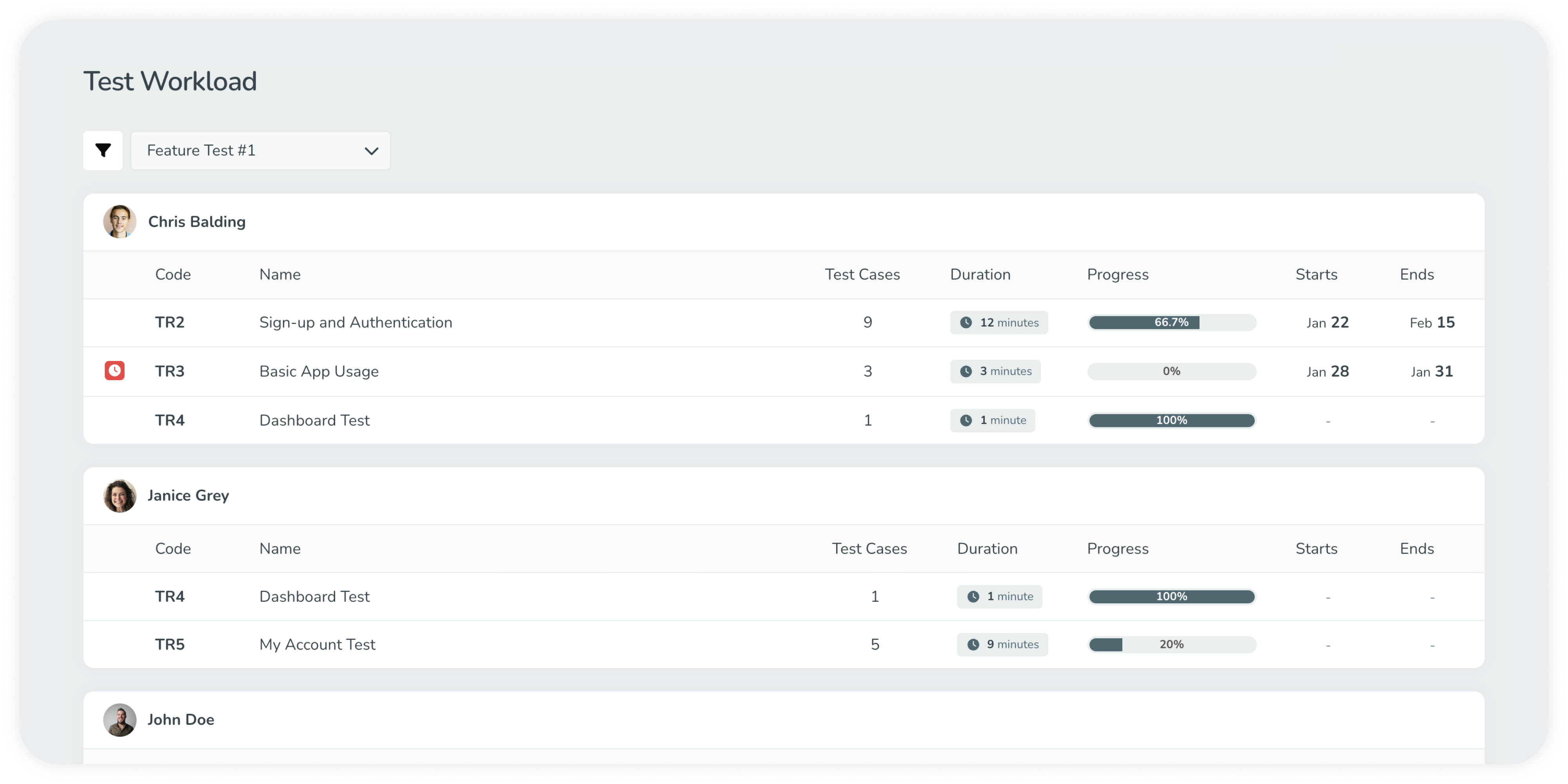
Efficiently Tracking Test Results in TestMonitor
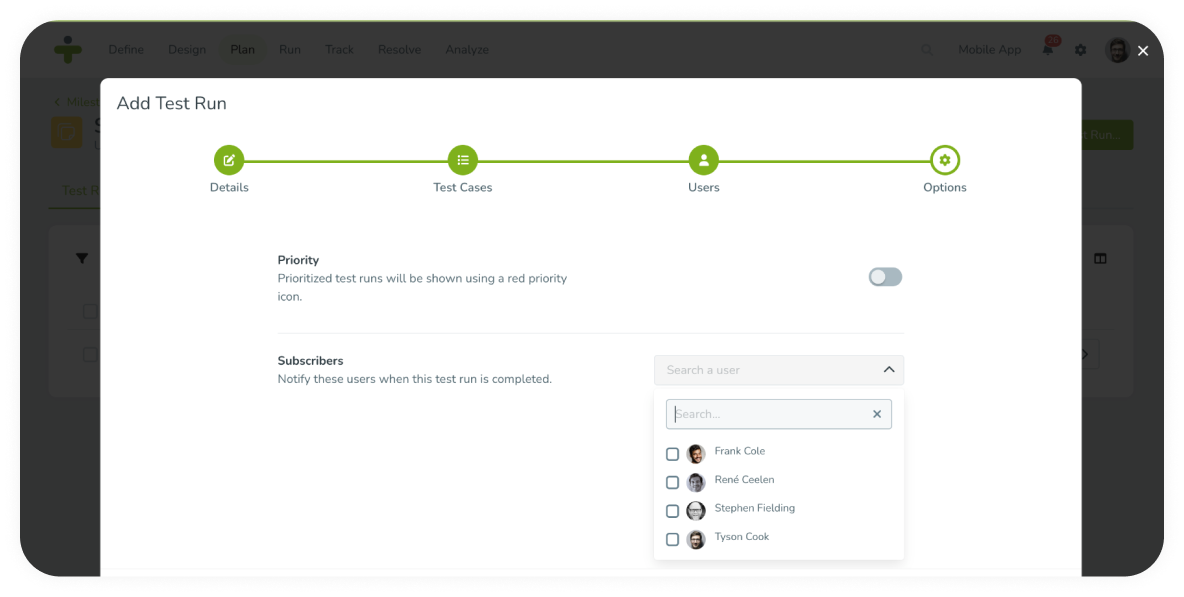
Monitoring Test Run Dependency by Adding Test Run Subscribers
